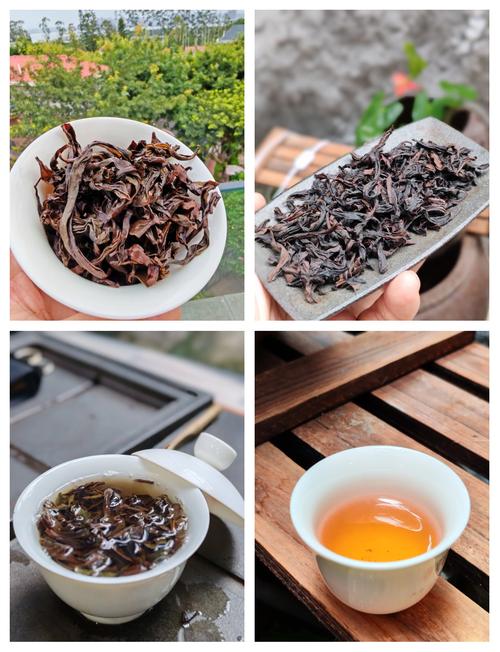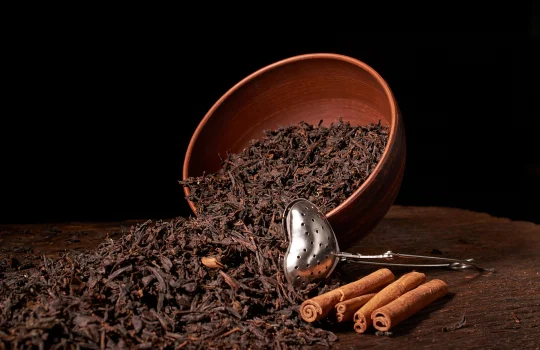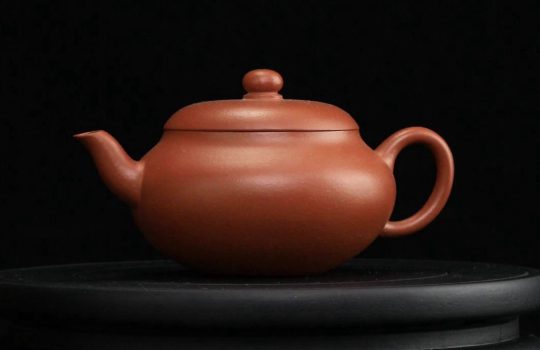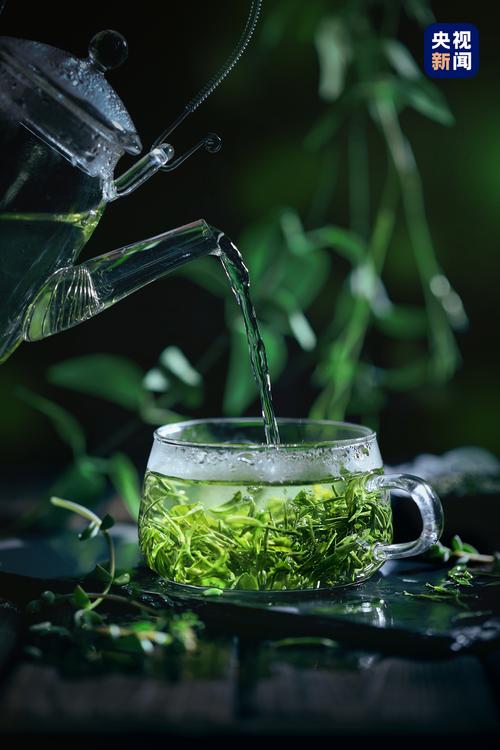There are countless varieties of tea available on the market, each with its own unique characteristics. Therefore, selecting the right tea has become a priority for many people. Generally speaking, tea selection primarily involves evaluating visual, olfactory, gustatory, and tactile qualities. Good tea stands out significantly in these aspects compared to ordinary tea. Overall, when selecting tea, the following five elements should be considered:
1. Appearance
When selecting tea, the first thing to consider is its appearance. Tea with a uniform appearance is generally of higher quality, while broken or fragmented tea is of lower quality. You can place the tea leaves on a plate and, under the influence of rotational force, they will naturally form ordered layers based on their shape, size, weight, thickness, and degree of fragmentation. The coarser leaves will be on the top layer, the tighter, finer, and heavier leaves will be concentrated in the middle layer, and the broken, fragmented, and smaller leaves will settle at the bottom layer. For all tea categories, a higher proportion of middle-layer tea is preferable. The top layer typically contains more coarse, older leaves, resulting in a lighter taste and paler tea colour; the bottom layer contains more broken tea, which often yields an overly strong taste and darker tea colour when brewed.
In addition to the integrity of the leaves, the shape of the tea leaves should also be considered. For long, slender tea leaves, examine their tightness, curvature, thickness, roundness, flatness, and weight; for round tea leaves, examine the tightness, uniformity, weight, and density of the particles; for flat tea leaves, examine their smoothness and flatness. Generally, tight tea leaves with a heavy body indicate tender raw materials, fine craftsmanship, and good quality. If the tea is loose, the particles are loose and puffy, the leaf surface is rough, and the body is light and floaty, it is not considered good tea, and such tea should be avoided.
Different types of tea have specific shape characteristics. Some resemble silver needles, some resemble melon seeds, some resemble round beads, some resemble sparrow tongues, some have loose and puffy leaves, and some have tightly rolled leaves. Premium teas have their own unique shapes, such as the micro-flat and straight shape of Wuzhi Xianhao.
In addition to these two methods, the quality of tea can also be judged by its purity. High-quality tea contains no impurities, such as tea fragments, tea stems, tea dust, tea seeds, or foreign materials like bamboo shavings, wood chips, lime, or sand that may have been mixed in during processing.
Judging tea by its appearance is not difficult. Simply take an appropriate amount of dry tea leaves into your palm, observe them with the naked eye, and feel them to determine their quality. Additionally, when picking up the tea leaves, do not forget to check for any impurities inside.
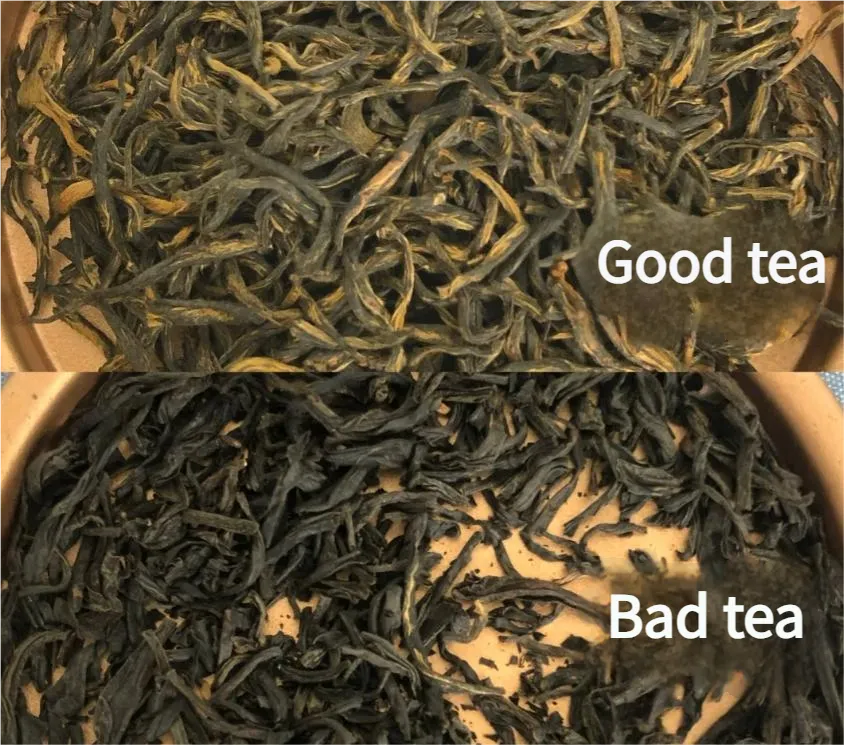
2. Aroma
Aroma is the soul of tea, and every type of tea has its own unique fragrance. For example, green tea has a fresh, crisp aroma, black tea has a slight caramel-like scent, oolong tea has a distinctive ripe fruit aroma, and floral tea has a strong blend of floral and tea aromas.
When selecting tea, you can judge its quality based on the strength, purity, and longevity of the dry tea’s aroma. For example, hold the tea leaves in your hand, bring them close to your nose, and gently inhale. Generally, those with a strong, fresh, pure, long-lasting aroma and no off-odours are considered superior. If the tea has a musty, smoky, or stale aroma, it is of inferior quality.
In addition to smelling the dry tea’s aroma, if the seller permits, it is best to brew and taste the tea before purchasing. Brewed tea has a more fragrant aroma, carrying the unique scents of various teas, making it easier to discern quality.
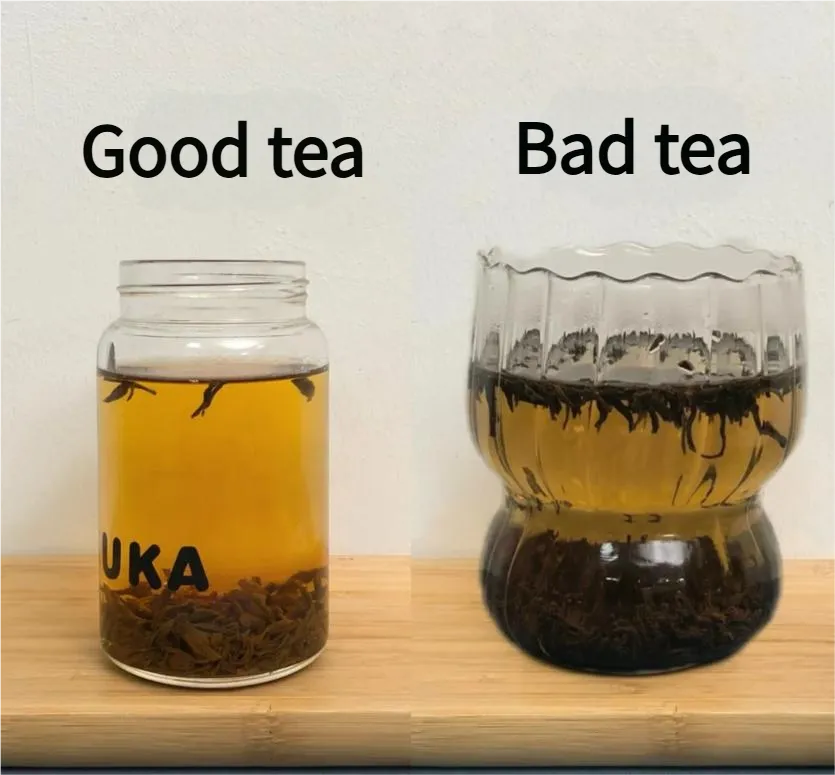
3. Colour
Different teas have distinct hues, but regardless, high-quality tea always has a bright, lustrous, and vibrant appearance. Therefore, we can assess tea quality based on its colour. Generally speaking, green tea is emerald green and vibrant, black tea is dark and oily, oolong tea has a greenish-brown hue, and black tea has a black and oily colour. Teas with such hues are often high-quality. Those with inconsistent colours, varying depths, or dull, lifeless hues indicate inconsistent raw material quality,粗糙 processing, and low quality.
The colour of tea leaves is related to many factors, such as the tenderness of the raw material, the variety of tea plants, the conditions of the tea garden where the leaves are picked, and the processing techniques. For example, high-mountain green tea has a green colour with a slight yellowish tint, appearing fresh and bright, while low-mountain or flatland tea has a deep green colour with a lustrous sheen. If the killing green process is uneven, it will result in uneven and irregular lustre in the tea leaves. However, if the processing techniques are poor, even fresh and tender tea buds can become coarse, dry, and dull.
In addition to the colour of the dry tea leaves, we can also distinguish the quality of tea by the colour of the tea liquor. Good tea has a fresh, clear, and bright tea liquor with a certain degree of brightness, while inferior tea often has sediment and a cloudy tea liquor. As long as we remember the colour characteristics of different types of good tea, selecting high-quality tea leaves should not be difficult.
4. Taste
Different types of tea have different tastes, so the criteria for evaluating them often vary. However, the characteristics of good tea are generally similar across all types. For example, green tea has a fresh, mellow, and rich taste, with a slight bitterness at first that gives way to sweetness; black tea has a sweeter taste with an endless aftertaste; and floral tea has a refreshing, sweet taste with a distinct floral aroma. Although there are many types of tea, those with less bitterness and astringency, a smooth and rich texture, and a lingering aroma are considered high-quality teas, while those with strong bitterness, astringency, or a heavy, stale or burnt taste are considered inferior.
Take a small sip of tea, close your eyes, and savour the taste, allowing the tea’s aroma to melt between your lips and teeth. Whether it is aromatic, sweet, smooth, or delicate, the common characteristic of every good tea is that it leaves a lasting impression.
5. Charm
The charm of tea is not merely its taste but a rich inner quality and subtle elegance. Throughout history, scholars, poets, nobles, and commoners alike have praised the charm of tea. Whether it be elegant tea poetry or colloquial tea couplets, they all reflect people’s deep affection for tea. Taking a sip of tea, one immediately feels the sweetness on the tongue. Taking another sip, one feels refreshed and at ease. Even after finishing the cup of tea, its charm lingers like an echo, refusing to fade, leaving one feeling as though they were floating on a cloud. It is as though life itself has been transformed into the fragrant, clear essence of tea, where bitterness gives way to sweetness—truly a beautiful thing.
Regardless of the type of tea, the above five methods can be used to distinguish its quality. By frequently engaging with tea and paying close attention to its appearance, aroma, colour, taste, and essence, one will undoubtedly be able to select fine tea.

